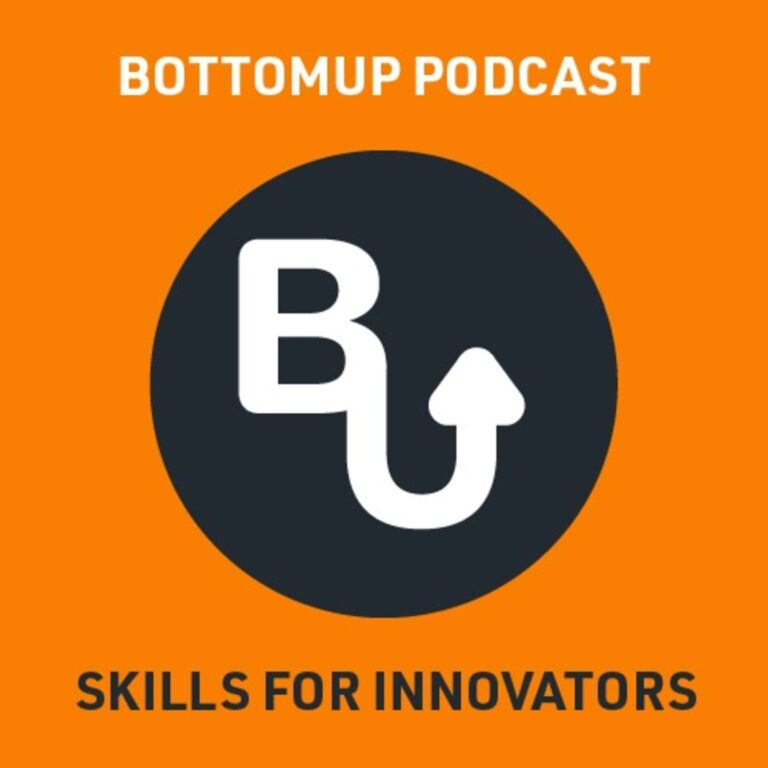We made it, the final episode of our unstuck series, where we look at the biggest challenges that product managers face, how do I keep customers? and we try to find solutions and answers to these problems.
In the last episode we introduced the growth marketing funnel or as we call it, the pirate funnel. We talked about the top of the funnel: Awareness, Acquisition and Activation and today we deal with the bottom half of the funnel. The 3 R’s; Retention, Referral and Revenue.
And we ask ourselves, how do we keep our customers? The second half of this funnel is built around retention revenue and referral. Each of these areas will have some key questions. And so I’d like to talk about those key questions and present to you our way of thinking about keeping customers. And I really do hope that this inspires you to serve your customers and create value for them.
So let’s start with retention, retaining customers is a kind of a tricky process. If we’ve worked really hard, we’re sort of a bit relieved when we actually get a customer, but then the work starts all over again because we have to retain them. So you’ve got to retain your customers. And the key question to ask is how many people come back a second, third, 10th, time to our product.
When we break down retention, there’s this real truth to the product. And that’s really finding out for ourselves, how much do people come back, which is a proxy for how satisfied are they? So you might want to really ask yourself. Are we really satisfying, not only the early adopters, but here’s the important thing: the early and late majority.
This is really important. Now another big metric in retention on top of satisfaction is going to be your churn rate. Your churn rate is how many customers out of every hundred customers are leaving you and within what sort of time period.
This one is really important to get into. Obviously it’s a bit tricky in the early stages of a company because you haven’t had a lot of customers leave because frankly you haven’t had many customers to begin with.
Work hard and acquire a hundred customers. You’ll have delighted those customers satisfied those customers to such a degree that they’ll each recommend the product once to another customer. So a hundred becomes 200 and then you can see how it sort of snowballs from there.
So if you want to understand how likely your customers are to refer someone listen in and join us for this our final episode of the product management unstuck series at the BottomUp Skills Podcast.
I really hope you’ve enjoyed some of the things we’ve talked about and we’d love to hear how they’ve really helped you. It’s been great to create this product management series and I hope you’ve enjoyed the journey, the challenges of product management, and I hope you’re just a little bit more unstuck and you’re on your way to building something great.
BottomUp Skills for free courses on Design Thinking, Agile, Lean and much more. Free skill courses for product people and innovators.
TRANSCRIPT
Hello, and welcome to the BottomUp Skills Podcast. I’m Mike Parsons, the CEO of Qualitance and we are there, Ladies and gentlemen. The final pot, the 12 pot of our unstuck series, where we really face the biggest challenges that product managers face, and we try and find solutions and answers to these problems.And in the last show we dealt with the top of the funnel, and today we deal with the bottom half of the funnel.
And we ask ourselves, how do we keep our customers? Now, this assumes that the product is live. You’ve had problem solution, fit, product, market fit. This is all really part of the distribution and conversion fit and, um, asking ourselves some critical questions about how customers are behaving.Are we creating enough value? Are we capturing enough value?
This is the really big question. So there’s three ways to go about answering this question of how do you keep your customers? And like the top of the funnel, the second half of this funnel is built around. Retention revenue and referral three R’s to match the three A’s that are at the top of the funnel.Now each of these areas, retention, revenue and referral, we’ll have some key questions. And so I’d like to talk about those key questions.
I’d like to really dig into those and, um, present to you our way of thinking about keeping customers. And I really do hope that this inspires you to serve your customers, create value for them.And if you do that, you’re going to have a fantastic little part. Okay. So let’s start with retention now, retaining customers, you know, sometimes retaining customers is a kind of a tricky process.
Look, if we’ve worked really hard, we’re sort of a bit relieved when we actually got a customer, but then the work starts all over again because we have to retain them.And look, if we’ve done a good job, chances are somebody will see our product. And I know wait for it. They’re going to copy it so very quickly there will be competitors. And once these competitors, people will undercut you on price.
So you’ve got to retain your customers. And the key question to ask is how many people come back a second, third, 10th, time to our product.Now, when we break down retention, This is really good because somewhere in retention, there’s this real truth to the product.
That’s really finding out for ourselves, how much do people come back, which is a proxy for how satisfied are they? So you might want to, um, uh, really ask yourself. Are we really satisfying, not only the early adopters, but here’s the important thing. The early and late majority, this is really, really important. Now another big metric in retention in, uh, on top of satisfaction is going to be your churn rate.
Now your churn rate is how many customers out of every a hundred customers, how many are leaving you and within. What sort of time period.This one is really important to get into. Obviously it’s a bit tricky in the early stages of a company because you haven’t had a lot of customers leave. Frankly you haven’t had many customers to begin with.
But this retention rate is, is really important because it’s such a clue because if you can see a good cohort of people coming back regularly, weekly, maybe daily to your product. Then you should be relieved when you see that. If people are using it as what happens with most products, they use once and never return, that’s a terrible retention situation.
So you really want to get over that hump of getting them back for that second or third time. This is really, really important.Now another part of the, this funnel next up Dan is okay, how many are we retaining? How many people stop paying and how much do they pay? This is really, really important because. Sometimes we make the mistake of vastly overestimating, how much our customers are going to pay.
So key revenue metrics to have in your mind is what does it cost us to acquire a customer?And then what does it cost us to get them to first purchase and does their average monthly revenue. Map out on an annual basis. And if we grow at this rate, at what point will we be a viable business? This is really, really important because you know, when we think about revenue, the other thing here is that the acquisition costs could be out of control.
So what I mean here is that, look, we’ve got customers that are paying, but actually let’s say each customer pays $5 a month. But it’s costing us $10 to acquire them. Then you’ve obviously stopped studying to have a problem. So what do you want to make sure that, you know, if a customer lasts, uh, let’s say customer spent a hundred bucks, uh, on their first two purchases and it costs you $20 to get them.
Can you afford, is that a viable cost of acquisition? This is a really important thing because a lot of early stage companies find that their acquisition costs are much higher and that whilst they are having revenue, they’re not making any profit. Like there is no margin in the business to say it differently.So this is why revenue’s really important.
Why retention is very important. Now I want to get to, uh, the, the last bit really important, um, part of the funnel, which is referral. Um, we know that a fast majority of people will be influenced by the most powerful, uh, model of customer acquisition, which is advocacy.
When people recommend your product or service to others, this. For every outreach has the most effective results. So what we often talk about in lean startup is your viral coefficient, and you want to try and get your product for every active customer to generate one complete new customer, because that viral coefficient is really good because it means if you.Work hard and acquire a hundred customers.
You’ll have delighted those customers satisfied those customers to such a degree that they’ll each recommend the product once to another customer. So a hundred becomes 200 and then you can see how it sort of snowballs from there. So when we think about referral metrics, the King of referrals is MPS.So if you want to understand how likely. Your customers to refer someone, do an NPS survey where you ask them this question, and, um, sometimes you can follow up and give them an incentive.
If they’re in advocate, you know, in an advocacy status, am I really, really delighted with your product? You can actually give them an incentive.Or a means to go out and, um, you know, refer your product or service to others. Now, um, you can do some other things. Like you can look at your, um, building, sharing into your product and how much social sharing people do. It’s good. It’s not as good as the NPS. Because, um, you know, sharing, um, has slightly different characteristics to MPS. But it’s still a decent metric to look for.
There’s a whole practice around referral marketing and how to carriage customers to refer your product to others. Well, there you go. For today. We’ve looked at retention revenue and referral as all ways of keeping the customer and keeping your customer is a very close relative of getting your customer. And that used to the three A’s awareness, acquisition, and activation coming together, that six parts of the pirate metrics funnel, which is a great way. To put growth marketing at the heart of your product.
I know this has been like a rip roaring quick dash through these key challenges we face as product designers, creators and builders. I really hope you’ve enjoyed some of the things we’ve talked about and how they’ve really helped you. Maybe remind you of some things or brought you some new thinking on how you can build a better product, how you can create more value in the world.
All right. It’s been great to do this series. I hope you’ve enjoyed, uh, the key challenges of product management, and I hope you’re just a little bit more unstuck and you’re on your way to building something great. All right, this is the bottom-up skills podcast. That’s a wrap.


